The musculoskeletal system is the most important part of our body. Often, back pain causes you to see a doctor.
Proper low back pain, stiffness of movements and muscle spasms are caused by lumbar osteochondrosis, a disease of the bone and cartilage tissues, as well as the musculoskeletal system, caused by various factors in the body.
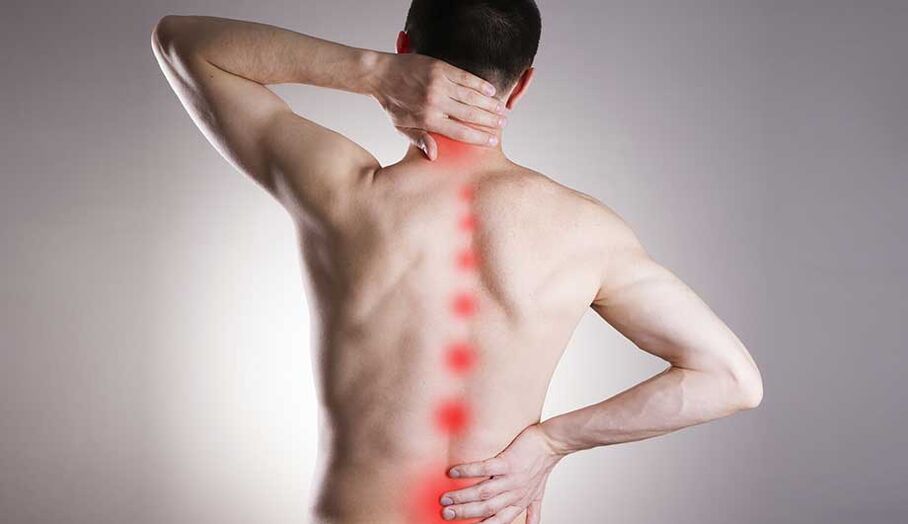
Posterior osteochondrosis is a problem that many face.
Etiology and pathogenesis of osteochondrosis
Posterior osteochondrosis manifests itself gradually and latently affects all new areas of the spine. Initially, changes occur in the structure of the cartilaginous discs of the vertebrae: they lose their elasticity, the space between the vertebrae decreases, and the nerve endings of the spinal cord are damaged.
The patient begins to experience back pain. Subsequently, the changes take up smaller elements of the vertebral structure, the growth of degenerative bone tissue that impedes the mobility of the spine develops, healthy cartilage cells are destroyed, and diseased bones and ligaments are affected. As a side effect, the deformation of the vertebrae causes an increase in the load on the organs and blood vessels. This is due to the specificity of the blood supply - the displacement of spinal segments causes constriction of the spinal artery, resulting in severe disruption of blood flow to the central nervous system.

The main problem that leads to disruption of the formation of the spine and the process of osteochondrosis is malnutrition and reduced blood supply to the tissues of the bone structure. The reasons for development are many factors, external and internal influences of a person and behavioral processes.
Endogenous causes include:
- genetic factors of heredity;
- violation of the metabolism of trace elements (phosphorus and calcium);
- features of cartilage tissue;
- age-related changes in the body;
- excess weight;
- orthopedic diseases.
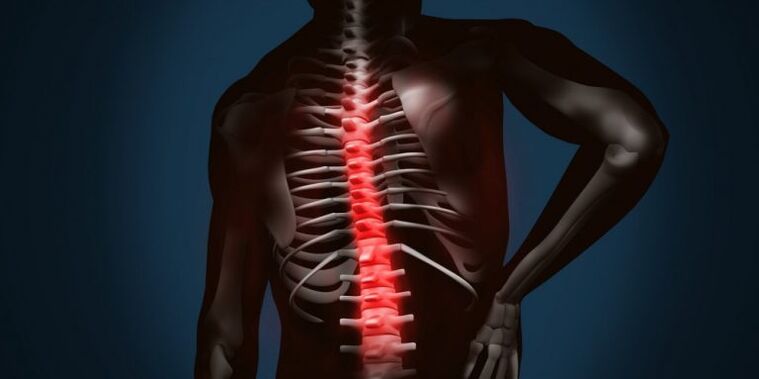
Osteochondrosis develops as a result of exogenous (external) causes and lifestyle:
- low level of physical development of the back muscles;
- spinal cord injury;
- irregular posture, scoliosis;
- systematic incorrect or restless posture;
- unbalanced diet, eating fatty foods;
- unequal physical strength, back overload;
- bad habits;
- constant stress.
The latent form of osteochondrosis can manifest itself with weight lifting, jumping, and falling, which can lead to microtrauma of the spinal disc and nerve root damage.
At this time, the patient may initially feel a sharp shooting pain. In the future, the pain syndrome will recur with varying intensity. Affected nerve stem cells indicate the need for urgent medical intervention.
Classification of the disease, the main stages
In medicine, osteochondrosis is classified according to the affected area of the spine:
- cervical;
- chest;
- spine and sacral region.
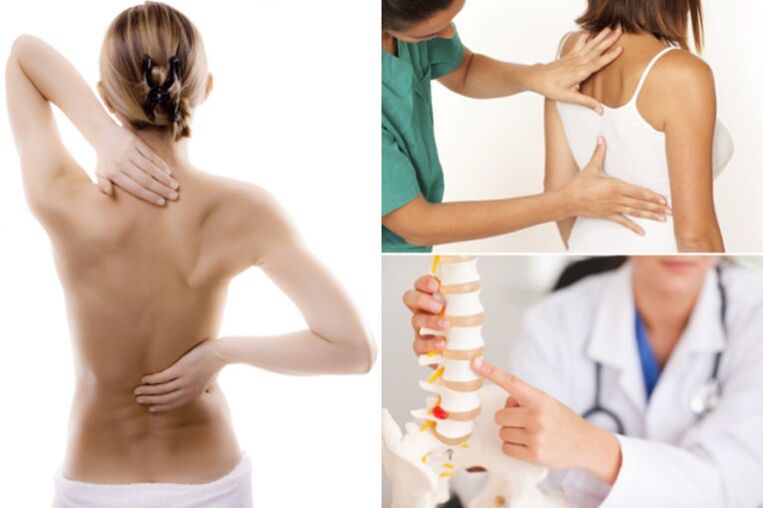
Posterior osteochondrosis is classified according to the affected area.
The main stages of disease development:
- The beginning of the development of osteochondrosis - in the fibrosis of the ring micro-cracks are formed, moisture is lost from bone and cartilage tissue. The stage manifests itself with a slight discomfort in one of the areas of the spine after physical exertion or a restless position of the body.
- The first painful attacks are felt. In the second stage, the discs are exposed, the intervertebral space of the discs is reduced and the fibrous capsule collapses, and the nerve roots are compressed. Pain indicates the course and destruction of metabolic disorders in cartilage tissue. Ignoring the second stage of osteochondrosis leads to inflammation of the cartilage and, consequently, the destruction of nerve fibers, blood and lymphatic vessels.
- In the third stage of the disease, the affected vertebra is deformed, the cartilage tissue is removed. With proper active treatment, it is possible to stop further destruction of cartilage cells and curvature of the spine. But in the future, supportive therapy and care will be the patient's constant companions for normal physical activity.
- Osteochondrosis, which progresses to the last fourth stage of development, often leads to disability. All destructive processes are irreversible: significant displacement of the spinal structure, compression of cartilage tissue, pathological growth of bone tissue. The patient feels sharp, sometimes unbearable pain with each movement.
Symptoms
The developmental symptoms of articular osteochondrosis are easy to confuse with other diseases with similar symptoms. In addition, the manifestations have specific characteristics for a separate sector of the vertebral structure.
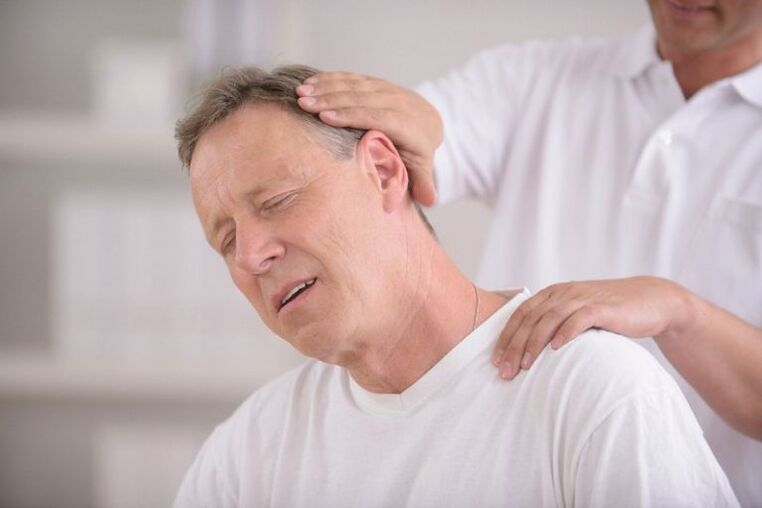
The main symptoms of osteochondrosis include:
- stiffness when moving, squeaking, crushing, or weighing;
- pain in the area of localization of inflammation (cervical, thoracic or lumbar) of varying intensity and nature;
- limb alignment;
- muscle weakness, impaired performance;
- pain attacks that spread to related parts of the body (shoulder, shoulder blade, foot) along nerve channels.
Cervical osteochondrosis
Osteochondrosis of the cervical sector is expressed in the following diseases:
- pain in the neck or back of the head;
- dizziness;
- hearing and vision impairment, tinnitus;
- neck stiffness after lying down or maintaining the same posture for a long time;
- painful sensations when turning his head.

With dizziness and cervical osteochondrosis, dizziness and pain may occur. The appearance of the first painful sensations is observed behind the head and resembles the head. Inflammatory cartilage pressures on nerve fibers provoke vasospasm.
Chest osteochondrosis
The development of thoracic osteochondrosis can be masked for a long time as cardiovascular disease. Its characteristic features:
- disturbance of tactile sensations and numbness of limbs;
- tingling in the intercostal space;
- pain in the heart, arrhythmia;
- restriction of respiratory function, heaviness in the sternum;
- disorders of the gastrointestinal tract (pancreatitis, edema);
- spreads pain to the scapular region.
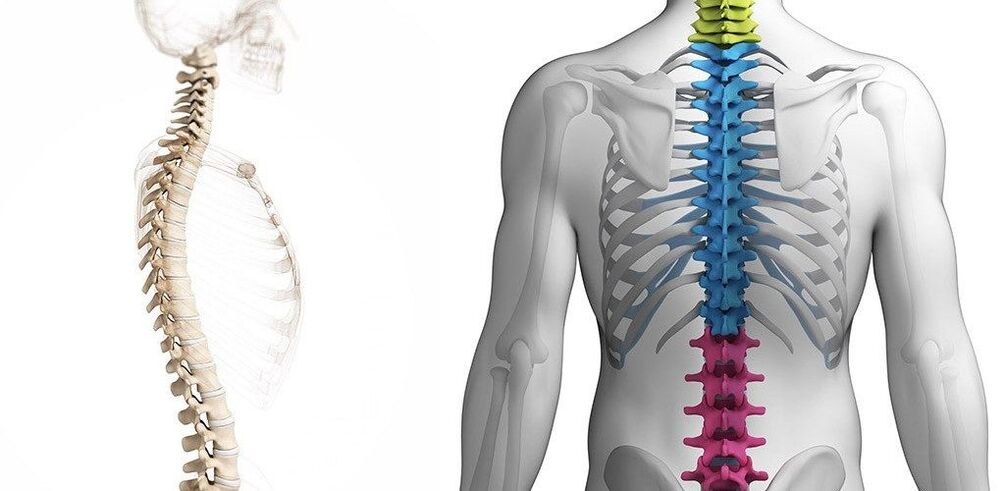
Lumbar osteochondrosis
An advanced form of lumbar osteochondrosis can lead to disability. The inflamed area of the spine stops supplying the lower extremities with the necessary trace elements for the full functioning of the joints and muscles. Compressed cells of the nervous system cause unbearable back pain and the use of drug therapy.
The main symptoms of lumbar osteochondrosis are:
- concussion of the lower extremities;
- muscle pain, weakness;
- chills;
- muscle spasms;
- dysfunction of the reproductive system;
- The pain may be sharp or painful in the lower back, spread to the legs.

Diagnostics
On average, 20 people are diagnosed with osteochondrosis per 1, 000 people. A disease such as osteochondrosis is difficult to diagnose in the early stages. The symptomatology is very secretive and manifests itself only in 2-3 stages when it comes to serious drug treatment.
If the development of osteochondrosis is suspected, it is necessary to first consult a specialist and conduct a thorough examination to make a differential diagnosis and clarify the diagnosis.
Doctors use three standard diagnostics:
- Neurology.
- Instrumental.
- Laboratory.
The initial neurological examination of the patient is performed by a neurologist and determines the category of nerve structures affected by the disease. In addition, the patient may be referred for x-rays, ultrasound, MRI, and ECG to rule out diseases of a different nature with similar symptoms.
Laboratory (Analyzes)
Laboratory diagnostics has the value of a consultant-assistant. Blood tests show an increase in erythrocyte sedimentation rate and a decrease in calcium levels. This means the course of pathological processes in the body, but does not show developmental features. Therefore, this method is included in the comprehensive examination of the patient and the results are deciphered on the basis of other medical data.
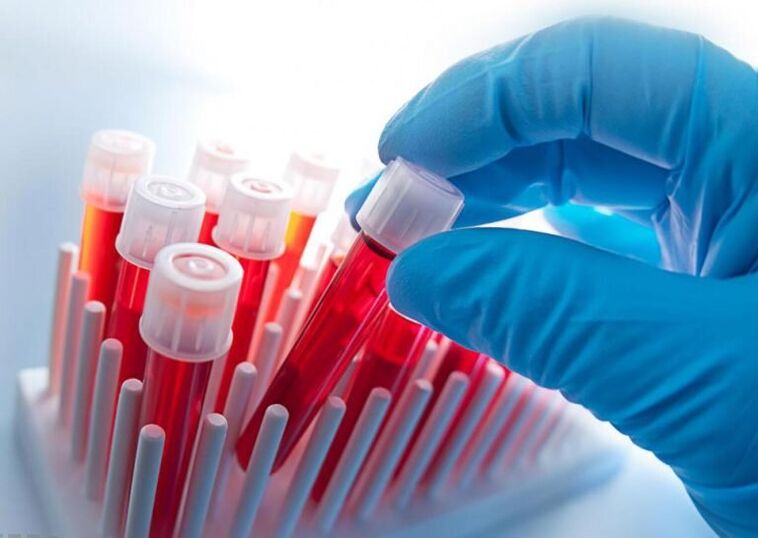
Instrumental
Diagnosis using professional equipment gives the most accurate results about diseases of different nature. The main research tools are:
- X-ray - detects anatomical changes in bone, cartilage, nerve tissue.
- MRI - magnetic resonance imaging. Allows you to visualize the processes occurring in bone and soft tissues, blood vessels and nerve fibers.
- CT (computed tomography) - similar to MRI, but emits radiation.
- Electromyography - can decipher neurological symptoms.
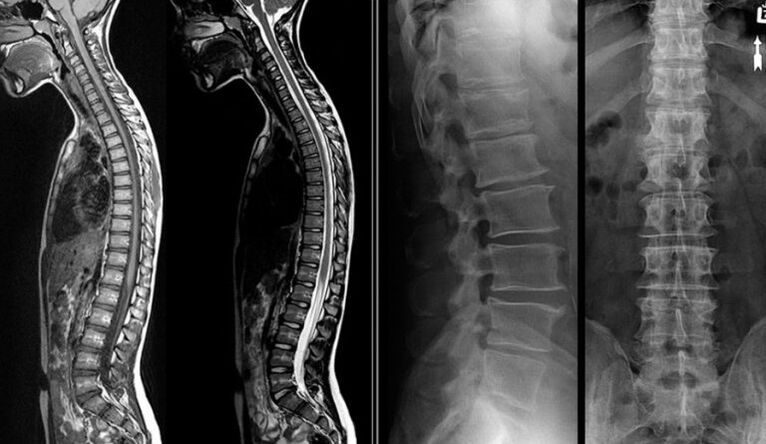
Traditional treatment
The treatment regimen for osteochondrosis is traditionally carried out. Its components are drugs in various directions: NSAIDs, chondroprotectors, analgesics, hormonal substances and supportive vitamin complexes. In addition to the use of drugs in the fight against osteochondrosis, physiotherapy, hand therapy, reflexology, surgery, massage and preventive measures are also used.
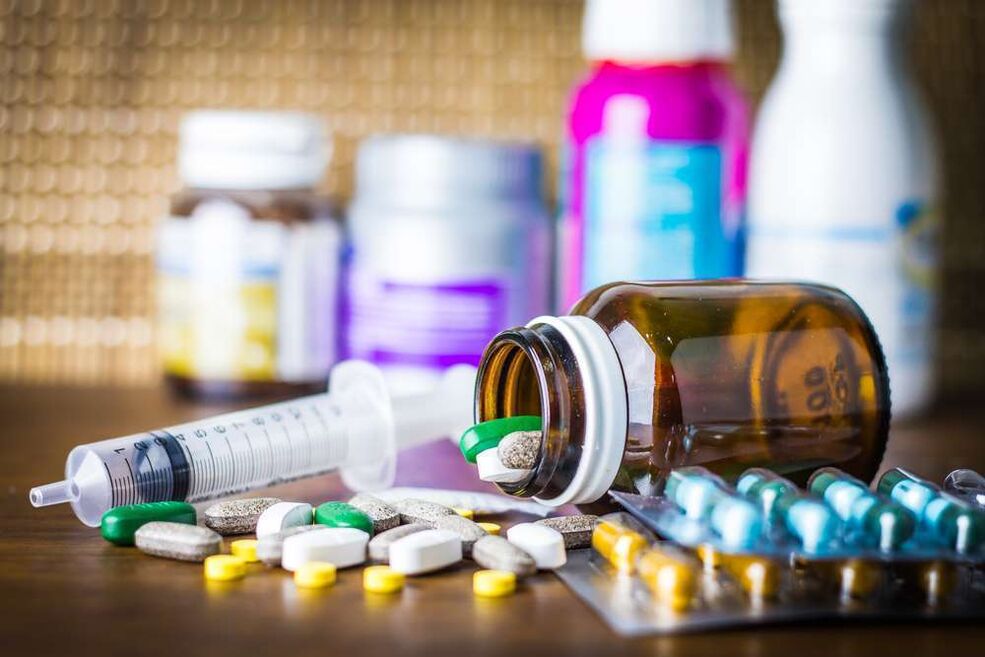
Drug treatment
It is not possible to stop back pain forever due to osteochondrosis, but medical treatment with medication will delay the back for a while. Strong anesthetics and anti-inflammatory drugs (NSAIDs) will have an analgesic effect and begin the process of combating inflammation in the spinal areas. Indispensable drugs for the treatment of posterior osteochondrosis:
- Chondroprotectors are active substances that restore the elasticity of cartilage tissue and mobility of the vertebrae.
- Muscle relaxants - soothing spasms of muscle structure.
- Vascular - improves blood circulation and metabolic processes.
- Vitamin complexes and antioxidants.
Only when a properly selected therapeutic complex is used, positive dynamics can be achieved and the result can be maintained for a long time.
Various drugs are used in the treatment of posterior osteochondrosis:
- External means: ointments, creams, gels.
- Preparations for internal use: capsules, tablets.
- Drug injections.
Surgical intervention
Unfortunately, there are cases of osteochondrosis, when the treatment is delayed and the drugs do not give the expected result, and the disease progresses. Then the only solution is surgery. The main reasons for the operation are:
- Removal of an intervertebral hernia that compresses the spinal cord.
- Reduction of the intervertebral fracture to 1/3 of the original size.
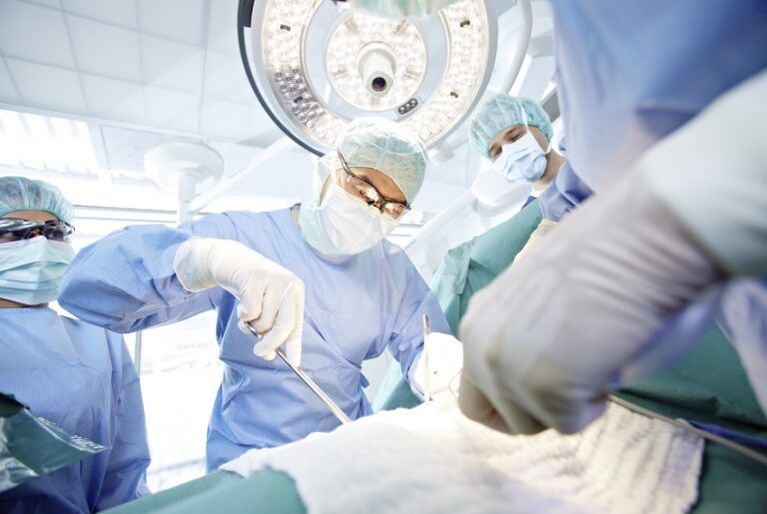
An application for surgical intervention may be prescribed by a physician based on the patient's complete diagnostic picture and the availability of direct instructions to correct the pathological defect. The leading place in spinal surgery is the method of discectomy - surgical removal of the deformed disc. Instruments can be microdiscectomy, B-Twin system or laser evaporation of the nucleus. Rehabilitation lasts six months after spinal surgery.
Gymnastics
An excellent supportive therapy for the treatment of osteochondrosis is gymnastics or exercise therapy. Regular training will help:
- Strengthen the muscle corset - this is necessary for an equal load on the spine.
- Stimulate blood circulation to saturate bone and muscle tissue.
- Develop the correct posture.

It is important to remember that the exercises need to be adapted for diagnosis and in accordance with the following principles.
- Execution regularity.
- Smooth movement, no shaking.
- If you experience pain, you should reduce the load or stop training.
- Monitor your health.
Physiotherapy
Patients with osteochondrosis of the lumbar spine are treated with physiotherapy to eliminate inflammation and are carried out in areas where the disease is concentrated. Treatment courses help:
- Increases the body's resistance
- Restoration of metabolism in the affected sector.
- Eliminate pain and swelling.
- Improve blood circulation.
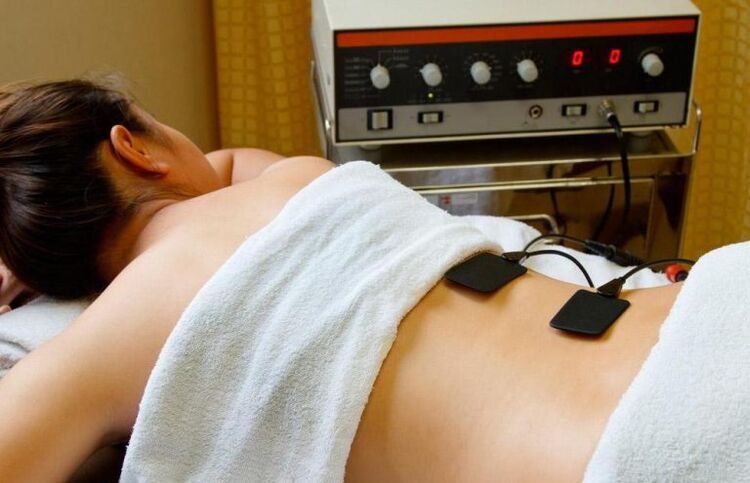
To choose a physiotherapeutic method for the treatment of osteochondrosis, you need to accurately determine the desired outcome. Mainly used:
- Laser therapy.
- Ultrasonic exposure.
- Electrical stimulation.
- Magnetotherapy.
Diet
There is no single dietary option for patients with osteochondrosis. However, doctors unanimously agreed with this diagnosis that the use of products belonging to the following categories is definitely not recommended:
- Oily broth soups.
- Pork and other fatty meats.
- Animal fats of birds (goose, duck).
- Coffee, caffeinated beverages.

In addition, the menu is limited to alcohol and sweets.
You can get diet number 15 for a diet sample. Contains all vital macronutrients, minerals, vitamins & carbohydratesThe energy value of a proper menu should be 2600-2700 kcal, which is 85-90g of protein, 350-400g of carbohydrates and 90-95g of fat.
Thus, the ideal menu for a patient with osteochondrosis is a combination of balanced unbalanced foods rich in vitamins and minerals. Meals are divided into 6 small portions.
Traditional treatment
Folk remedies are often used at home to relieve inflammation, relieve pain and muscle spasms, and generally strengthen the body. There are many recipes for decoctions and infusions of traditional medicine used in three main ways:
- rub;
- compresses;
- herbal baths.
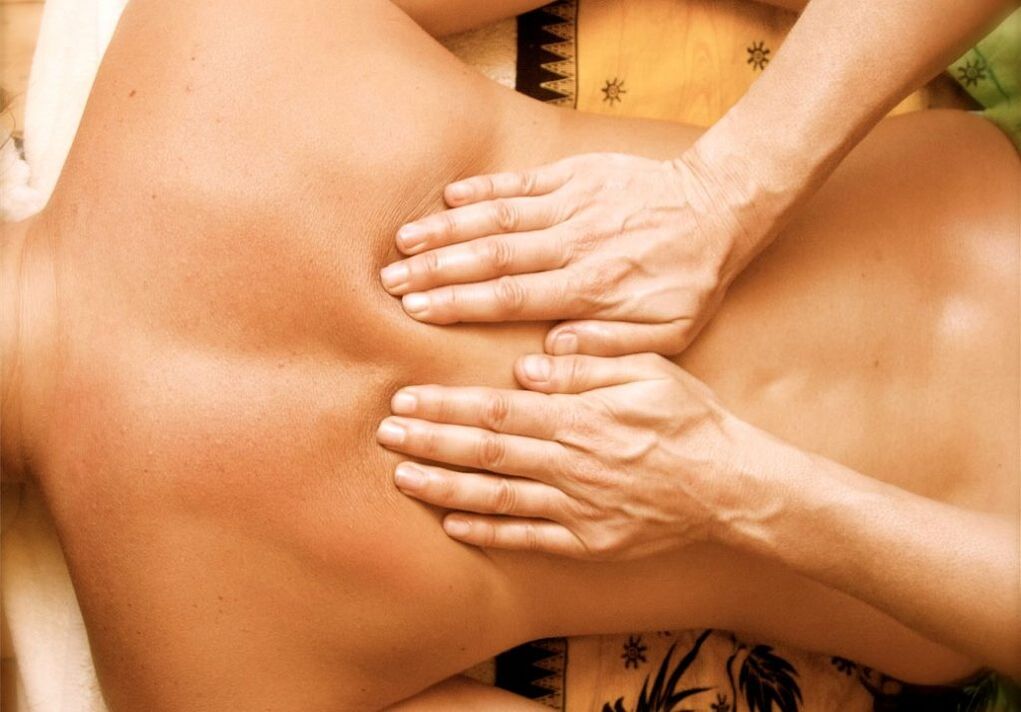
Daily use allows you to get rid of anxiety for 10-14 days. Conventionally, folk remedies can be divided into systemic and local effects on the body.
System Tools
You can use natural systemic preparations in the form of decoctions to affect the whole body and spine.
A positive effect is the action of yarrow decoction, which relieves pain, fights inflammation and soothes.
Local funds
Local remedies for folk recipes include ointments, compresses and infusions for rubbing. This product should be mixed according to the recipe and applied to the inflamed area, but only if there is no allergy to the components and no damage to the skin. Among the popular compositions, special attention is paid to honey compresses, ginger ointment on the tincture of calendula pharmacy, a mixture of fennel and sage herbs, rubbed with vodka with horseradish.
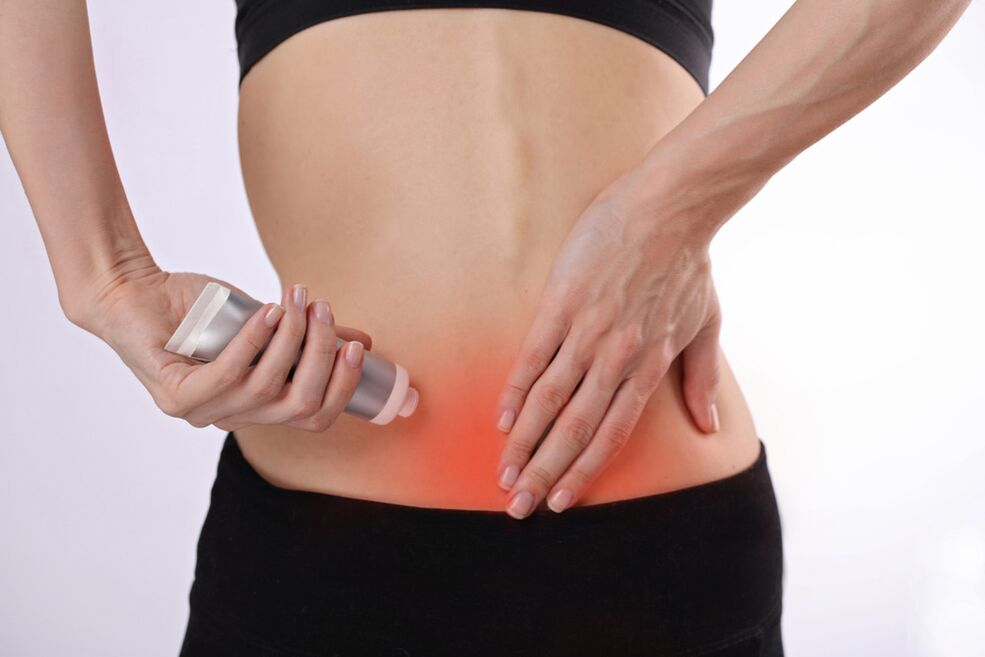
You should consult your doctor to choose an effective method and prescription, because home remedies are only part of the general treatment and have only a side effect.
Prophylaxis
Therapeutic treatment for back pain cannot be successful in the long run without preventive measures. Even the most effective and expensive medications do not provide a return of symptoms as the body returns to daily stress. Therefore, the positive effect should be combined and maintained by a few simple rules:
- Do not lift more than 10 kg.
- Observe the even distribution of the load on the back muscles.
- Observe rationality and balance in nutrition.
- Get restorative vitamins and active supplements (mucopolysaccharides).
- Prepare a regime to change the mode of rest and work.
- Maintain physical activity.
Remember that this category of disease is latent. Therefore, when a diagnosis is made, the course of posterior osteochondrosis should not be allowed, even if there are no obvious symptoms. Following all the doctor's recommendations and home care allows you to return to normal work sooner after treatment, but you need constant monitoring to prevent flare-ups.


























